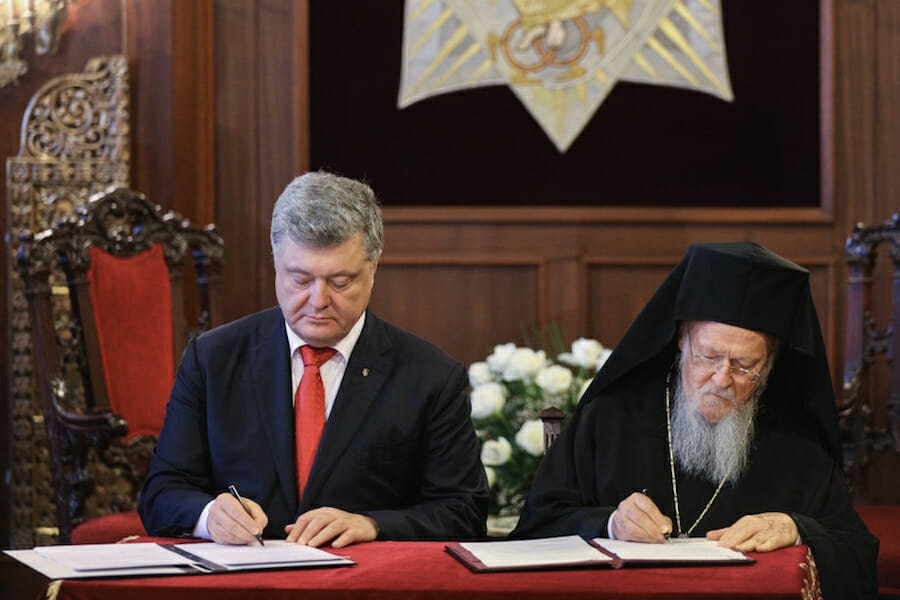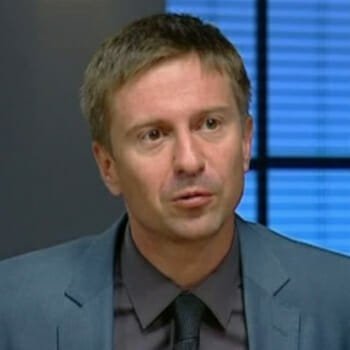
Culture
Ukraine’s Thorny Path to Tomos
Per aspera ad astra is exactly the path Ukraine has walked to rightfully get its own Local Orthodox Church. All thorns and hardships on Ukraine’s path were, in fact, “Russian-made.” There have never been any obstacles put forward by the Ecumenical Patriarchate. On the contrary, Patriarch Bartholomew’s actions have played a prominent role in establishing historical justice.
This has become the largest-scale and truly historic battle in the Orthodox world. It is during this fight when the Ukrainians realized that at the time of the occupation, their faith is yet another war domain.
Russia has employed in its battle against Ukraine all of its usual means of warfare: slander, manipulation, “kompromat,” bribery, threats, and blackmail. One of the examples was a media spin about Ukrainians allegedly “bribing” Patriarch Bartholomew. Such tools for manipulating public opinion are inherent in Russian propaganda. After all, since the Stalin era, the Russian Orthodox Church (ROC) has been an instrument for enslaving the society.
It should be noted that this is not the first confrontation between the Ecumenical and Moscow patriarchs and neither is it Russia’s first attempt to usurp powers. The ROC has long sought to usurp the authority of the Ecumenical Patriarchate.
This is evidenced by the annexation in 1686 of the Kyiv Metropolis – a canonical (rightfully owned) territory of the Ecumenical Patriarchate. That is how the Moscow Patriarchate appeared in Ukraine.
In 1970, the Moscow Patriarchate has independently granted autocephaly to the “Orthodox Church in America,” which was never recognized by the Ecumenical Patriarchate, and whose status thus remains unclear.
After the collapse of the Soviet Union, some countries of the post-Soviet camp where the majority of the population was Orthodox, gained church autonomies within the Ecumenical Patriarchate once they achieved independence.
Should we fear ROC-FSB?
To cover the issue, we should recall the history of certain conflicts that arose between the ROC and the Ecumenical Patriarchate.
In 1990s, Moscow threatened Constantinople to sever ties over the latter’s way of dealing with church issues in Finland, the U.S., Canada, and Estonia. However, none of those threats entailed any real action. Moscow’s threats as such are pretty ridiculous given the fact that the ROC was never granted a tomos on autocephaly from the Ecumenical Patriarchate, the most powerful body in the global Orthodoxy.
Struggle for local churches
The struggle for the independence of the Ukrainian church lasted for centuries. Until recently, the world did not even suspect that Ukraine had long been struggling for its ecclesiastical independence from the Russian Orthodox Church after it fell under its influence as a result of the illegal moves by the Russian hierarchs and state authorities back in 1686.
In the 20th century, there were several attempts to gain legal autocephaly, which failed because of the bias of Ukrainian authorities and their fear of Moscow.
The new stage in this struggle started in 1991, when Ukraine declared its independence. Back then, the people started to realize that, according to canons, an independent state should have its own independent church.
The issue was considered at the Local Council (assembly) of the Ukrainian Orthodox Church (UOC), held in November 1991. Bishops, priests and believers from across Ukraine took part in the meeting. The Council ruled to appeal to Moscow with a request to grant autocephaly.
All bishops signed the appeal, including Onufriy (Berezovsky), now the head of the exarchate of the Russian Orthodox Church in Ukraine, the Metropolitan of the “UOC.”
Instead of addressing the issue, Moscow launched a full-scale campaign against the then head of the UOC, Metropolitan Filaret (Denysenko). The campaign ultimately led to the holding of an illegal Council of Bishops, who sacked Metropolitan Filaret from the leading position in church and chose a Russian bishop instead, Metropolitan Volodymyr (Sabodan).
As a result, Ukraine was divided on religious grounds, while the Orthodox Church in Ukraine was split into two parts: a pro-Russian UOC of the Moscow Patriarchate (UOC-MP) and an independent UOC of the Kyiv Patriarchate (UOC-KP). The latter, as a result of a fierce opposition by the ROC, found itself in isolation from the global Orthodoxy. Later on, ROC’s destructive actions in Ukraine led to the creation of a third church in Ukraine – the Ukrainian Autocephalous Orthodox Church (UAOC).
The Ukrainian society has been in such state for the past 26 years. During the rule of various presidents, none of the attempts to reunite Ukrainian Orthodoxy into a single church bore fruit.
Path to tomos
In April 2018, after the talks between Ukrainian President Petro Poroshenko and Ecumenical Patriarch Bartholomew (who has an exclusive right to provide autocephaly to another church) the way was found to tackle the problem. The way was to seek the Church of Ukraine’s full canonical independence from the ROC. The Mother Church, which is the Ecumenical Patriarchate, has assumed responsibility for making this happen.
To this end, secular authorities (President and Parliament), church leaders (bishops of the UAOC, UOC-KP and part of the bishops of UOC-MP) submitted an appeal to the Ecumenical Patriarch on granting the Orthodox Church in Ukraine of a tomos (a document) on autocephaly.
The Synod (the governing body of the Church) considered the appeals and decided to initiate the procedure for granting the tomos. Such a procedure envisaged briefing on the decision all other Orthodox Churches worldwide, including the ROC. A special commission of the Ecumenical Patriarchate did it this summer.
Such actions sparked opposition from the Russian Church. In particular, the head of the Department of Foreign Relations of the Russian Orthodox Church, Metropolitan Hilarion Alfeyev, visited all Orthodox Churches persuading the clergy to sabotage the issue. ROC representatives in Ukraine spread fake news on the issue, trying to convince the Ukrainian society that there would be no tomos for Ukraine.
However, the process went on. This was confirmed by Bartholomew’s representatives, who arrived in Kyiv on July 28, 2018m to participate in state celebrations of the 1030th anniversary of the Baptism of Ukraine-Rus. On the occasion of the holiday, a massive procession took place with participation of all bishops of the UOC-KP and UAOC, the President and his family, and more than 60,000 Ukrainians.
Trying to hinder the process, Moscow Patriarch Kirill met with the Ecumenical Patriarch Bartholomew. The meeting’s agenda was kept secret but later it was revealed that the topic of discussion was Ukraine’s autocephaly.
In October, the Synod of the Ecumenical Patriarchate abolished the Ukrainian Church’s subordination to the Russian Orthodox Church and lifted excommunication orders earlier introduced by Moscow against the heads of the UOC-KP and the UAOC. These actions provoked opposition from the Russian Orthodox Church, which severed Eucharistic Communication with the Ecumenical Patriarchate.
However, this did not affect the position of the Ecumenical Patriarch, who deployed to Ukraine to complete the procedure two of his exarchs (ambassadors), who were welcomed by the UAOC and the UOC-KP. ROC representatives declared such actions unlawful and, contrary to Ukrainian legislation and canons, demanded that they leave Ukraine.
The research of documents from the time of the baptism of Kievan Rus confirmed the suggestion that the ROC’s actions in Ukraine had been illegal. It was established that the ROC has in fact seized the millennial history, the land and cathedrals.
It has been historically proven that the provision of autocephaly to any Local Church is an exclusive right of the Ecumenical Patriarchate, which has all the powers to give Ukraine the tomos on autocephaly without the consent of any other churches.
At the same time, Moscow has no tomos on autocephaly and neither has it any right to control the Ukrainian Church, which points to ROC’s non-canonical status and makes void the activities of its exarchates in Ukraine.
Despite the fact that Moscow pursues its destructive actions, threatens and intimidates Ukrainians with a religious war, Ukrainians are well aware of the situation in the Orthodox world and therefore, most of them, including in the occupied territories of Donbas, where people are excited to finally hear about Constantinople’s decision, support the actions of the Ecumenical Patriarchate despite Russian TV showering propaganda on them.
So, as we see, Ukraine, in spite of all obstacles, is steadily heading toward obtaining the tomos on autocephaly. The Unifying Council of Bishops is now expected to form the Single Independent Ukrainian Local Orthodox Church, which will become Ukraine’s strong spiritual foundation.
